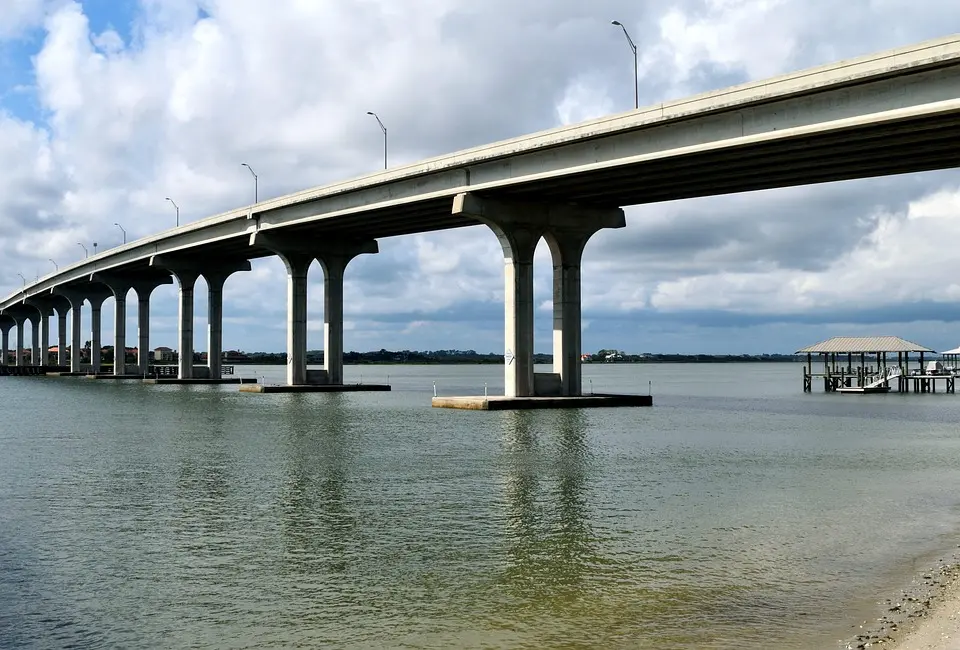Tarpon: Habitats - Bridges
Fishing Bridges for Tarpon

Image Credit: paulbr75 on Pixabay
Overview of Fishing Bridges for Tarpon
Fishing around bridges offers a unique opportunity to target tarpon by exploiting the structure and water flows created by man-made spans. Bridges often span channels and inlets where the movement of water creates natural feeding and ambush zones. Here’s an extensive look at what makes bridges productive for tarpon fishing:
Features Found Around and Under Bridges
-
Under-Bridge Channels:
Bridges typically span small channels where water current is concentrated. These channels funnel baitfish and create feeding hotspots for tarpon. -
Structural Elements:
- Pillars & Abutments: The vertical supports of bridges generate turbulence and provide cover. Tarpon use these areas as ambush points to strike at drifting bait.
- Overhangs: The shadow beneath a bridge can offer cooler, more sheltered water, attracting tarpon that prefer subdued light.
-
Transition Zones:
Areas immediately adjacent to bridges often feature a mix of deeper channels and shallow flats, where tarpon transition between feeding and resting zones.
Tarpon Behavior Around Bridges
-
Location:
Tarpon are often found beneath or near bridges, especially in channels that form under the span. They may patrol these areas looking for prey concentrated by tidal currents. -
Behavior:
- When actively feeding, tarpon may roll on the surface—a key sign of their willingness to strike.
- In the shadowed or turbulent areas under a bridge, they can be both aggressive and cautious, choosing ambush points for sudden strikes.
- If a channel exists under the bridge, tarpon often use it as a funnel to move between open water and sheltered zones.
Targeting Tarpon Near Bridges
Live Baits & Lure Options
-
Live Baits:
Pilchards and small baitfish are excellent live bait options near bridge structures. They mimic the natural forage tarpon target in these channels. -
Lure Options:
Soft plastic lures that imitate injured baitfish work well, as do topwater poppers which can trigger surface strikes when tarpon roll during feeding frenzies.
Retrieve Techniques
-
Stop-and-Go Retrieve:
- Technique: Alternate between steady motion and brief pauses.
- When to Use: Particularly useful under the bridge when tarpon are cautious and waiting for the right moment to strike.
-
Erratic Twitching:
- Technique: Introduce sudden twitches or jerks into your retrieve to simulate distressed prey.
- When to Use: This can provoke explosive strikes from tarpon, especially if they are conditioning to more predictable movements.
Spotting Tarpon
Keep a close watch for tarpon rolling on the surface near the bridge. This rolling behavior is a telltale sign that they are in feeding mode and ready to strike, and it serves as an excellent cue for when to cast your bait or lure.
Community and Expert Angler Tips
- Learning Through Video:
Watching detailed video tutorials can help refine your approach. Look for experts who specialize in bridge fishing for tarpon to learn advanced techniques.
Click the thumbnail above to watch a detailed guide on fishing bridges for tarpon.
For more tips, check out "fishing Bridges for Tarpon tips" on YouTube
Popular Search Terms Related to Bridges for Tarpon
| Search Term | Thumbnail | Link |
|---|---|---|
| Bridge Tarpon Techniques | Watch Video | |
| Best Live Baits for Tarpon Near Bridges | Watch Video | |
| Tarpon Bridge Retrieve Strategies | Watch Video | |
| Where to Find Tarpon by Bridges | Watch Video | |
| Tarpon Surface Rolling at Bridges | Watch Video |
The World's Most Complete Fishing Resource
We're building the ultimate fishing encyclopedia—created by anglers, for anglers. Our articles are created by real experienced fishermen, sometimes using AI-powered research. This helps us try to cover every species, technique, and fishing spot imaginable. While we strive for accuracy, fishing conditions and regulations can change, and some details may become outdated or contain unintentional inaccuracies. AI can sometimes make mistakes with specific details like local access points, parking areas, species distributions, or record sizes.
Spot something off? Whether it's an incorrect boat ramp location, wrong species information, outdated regulations, or any other error, please use the "Help Us Improve This Page" section below. Your local knowledge makes this resource better for every angler.
Explore Related Topics
Discover more articles to deepen your knowledge
Curating articles for you...
Create your own Research Page using AI
Try our AI assistant for free—sign up to access this powerful feature
